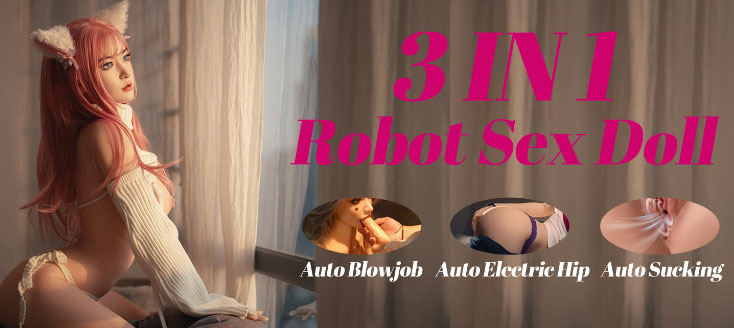What factors should people consider when deciding between investing in a luxury toy versus a budget option?
When considering whether to invest in a luxury sex toy or opt for a budget option, individuals should weigh several factors to make an informed decision. Each category of toys has its own merits and drawbacks, and understanding these factors can help consumers choose the right product for their needs and preferences. Here’s a comprehensive breakdown:
1. Material Quality
a. Luxury Toys
- Body-Safe Materials: Luxury toys often use high-quality, body-safe materials like medical-grade silicone, glass, or stainless steel, which are non-toxic and hypoallergenic.
- Durability: The materials in luxury toys are generally more durable, resistant to wear and tear, and less likely to harbor bacteria.
b. Budget Toys
- Lower-Quality Materials: Budget toys may use less expensive materials, such as porous silicone or PVC, which can carry risks like irritation or infections.
- Durability Concerns: These toys may wear out faster, leading to potential safety issues if not properly cared for.
2. Design and Aesthetics
a. Luxury Toys
- Attention to Detail: Luxury brands often prioritize design aesthetics, offering visually appealing products that may resemble art pieces.
- Ergonomic Designs: High-end toys typically feature ergonomic designs that enhance usability and comfort.
b. Budget Toys
- Basic Designs: Budget toys may have simpler designs that focus more on functionality than aesthetics.
- Limited Ergonomics: Comfort and usability may be compromised, with less attention given to how the toy fits in the hand or body.
3. Functionality and Features
a. Luxury Toys
- Advanced Technology: Many luxury toys come with innovative features like multiple vibration settings, app connectivity, or customizable functions, offering a personalized experience.
- Versatility: Luxury toys often have multiple uses, providing users with more options for exploration.
b. Budget Toys
- Basic Functions: Budget toys usually offer fewer features and settings, which may limit the variety of experiences available to users.
- Less Versatility: These toys may serve a single purpose and lack the multifunctionality that luxury options provide.
4. Performance and Satisfaction
a. Luxury Toys
- High Satisfaction Rates: Users often report higher satisfaction levels with luxury products due to their superior performance, advanced features, and overall design.
- Consistent Quality: Luxury brands usually maintain rigorous quality control, ensuring consistent performance and reliability.
b. Budget Toys
- Mixed Satisfaction Rates: Users may have varied experiences, with some budget toys performing adequately while others fall short of expectations.
- Inconsistent Quality: The quality control for budget options may not be as stringent, leading to more variability in performance.
5. Price and Value
a. Luxury Toys
- Higher Initial Cost: Luxury toys typically come with a higher price tag, which may be a deterrent for some consumers.
- Long-Term Value: Despite the upfront cost, luxury toys may offer better long-term value due to their durability, quality, and potential for a more satisfying experience.
b. Budget Toys
- Affordability: Budget toys are more accessible for those on a tight budget or looking to experiment without a significant financial commitment.
- Shorter Lifespan: The lower initial investment may lead to higher long-term costs if the toy needs to be replaced frequently.
6. Customer Support and Warranty
a. Luxury Toys
- Comprehensive Support: Luxury brands often provide superior customer service, including knowledgeable staff, multiple support channels, and clear return/warranty policies.
- After-Sales Engagement: Many luxury brands follow up with customers post-purchase, providing maintenance tips and educational resources.
b. Budget Toys
- Limited Support: Budget brands may offer minimal customer support, which can lead to frustration if issues arise.
- Vague Return Policies: Customers may find it challenging to navigate return or warranty processes, leading to dissatisfaction.
7. Brand Reputation and Community
a. Luxury Toys
- Established Reputation: Luxury brands often have strong reputations built on quality and customer satisfaction, providing peace of mind to consumers.
- Community Engagement: Many luxury brands foster communities around sexual health and wellness, offering workshops and educational resources.
b. Budget Toys
- Mixed Reputation: Budget brands may have varying reputations, with some users reporting negative experiences that affect the brand’s overall perception.
- Less Community Involvement: Budget brands might not engage as actively with the community, leading to fewer educational resources.
8. Personal Preferences and Needs
a. Lifestyle Considerations:
- Frequency of Use: If someone plans to use a toy regularly, investing in a luxury option may be worthwhile for durability and satisfaction.
- Purpose of Use: Consider whether the toy is for solo or partnered play, as some designs may be better suited for specific contexts.
b. Exploration vs. Commitment:
- First-Time Users: Beginners may prefer budget options to explore their preferences without a significant investment.
- Experienced Users: More experienced users may opt for luxury options that align with their refined tastes and specific desires.
Conclusion
When deciding between a luxury toy and a budget option, individuals should carefully evaluate factors such as material quality, design aesthetics, functionality, price, customer support, and personal preferences. While luxury toys often provide superior quality, performance, and customer service, budget options can be a practical choice for those looking to experiment or who have limited funds. Ultimately, the decision should align with the user’s priorities, needs, and desired experience, ensuring a satisfying and fulfilling choice.

